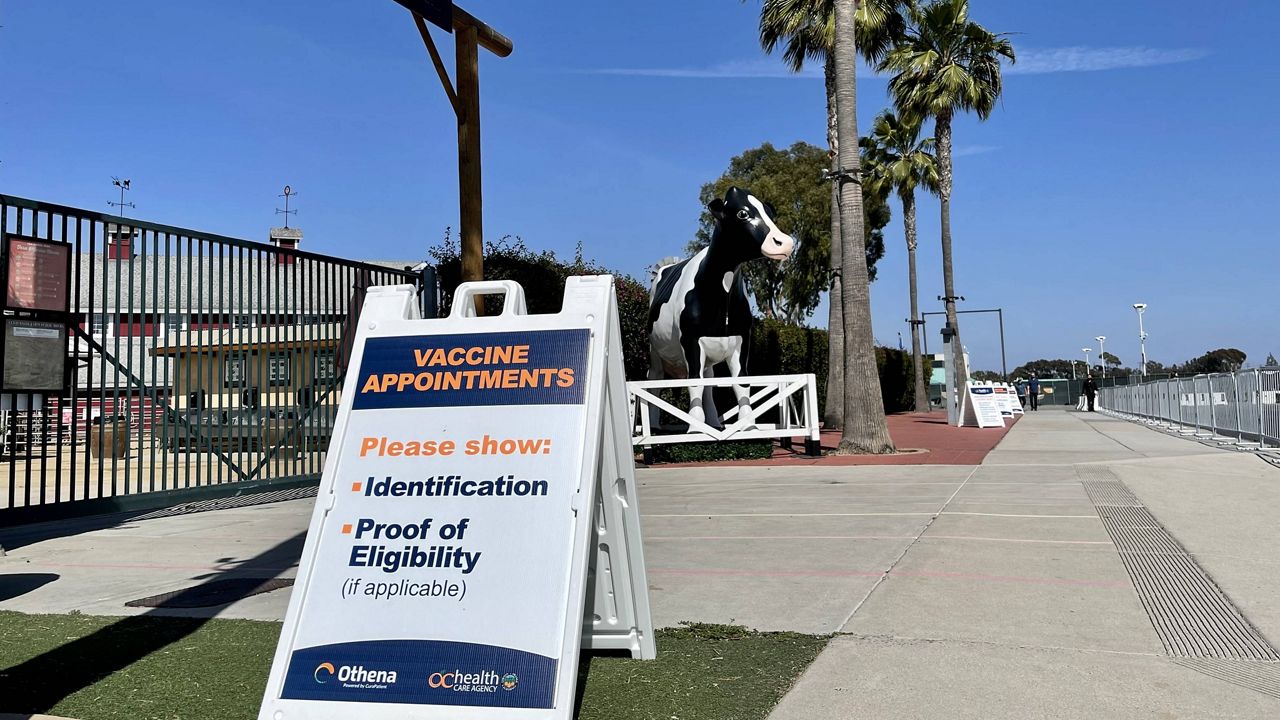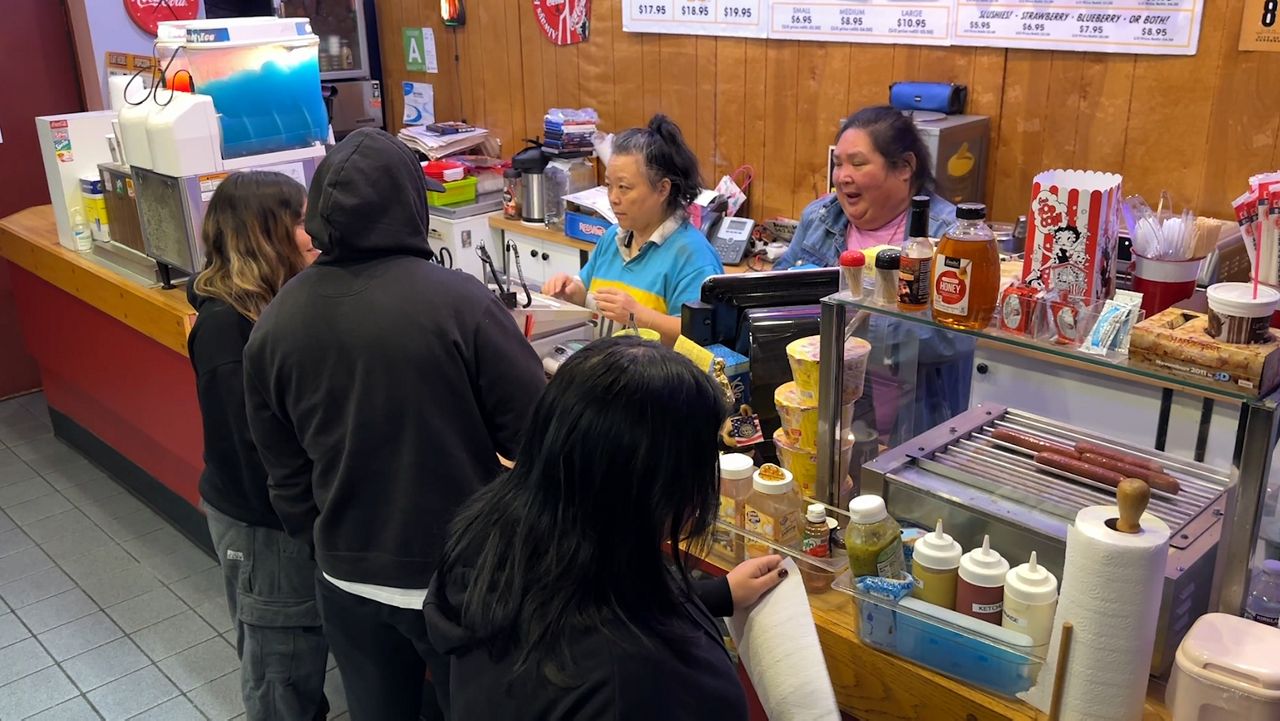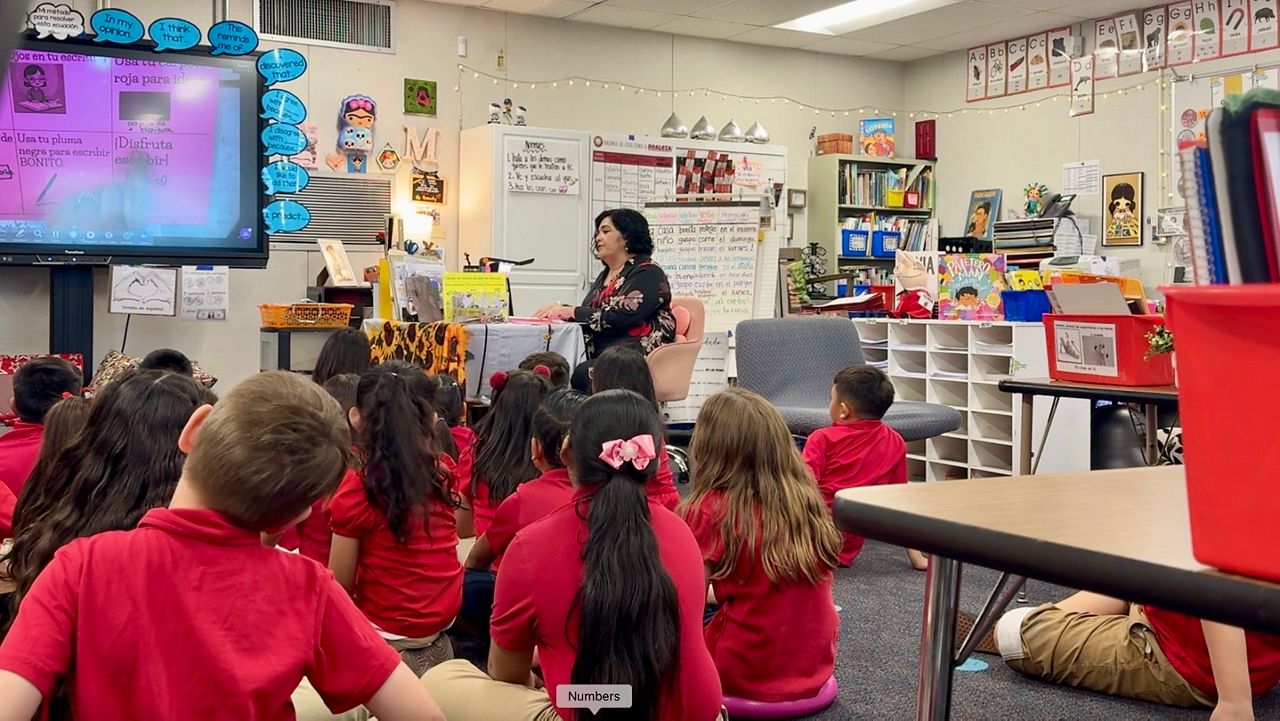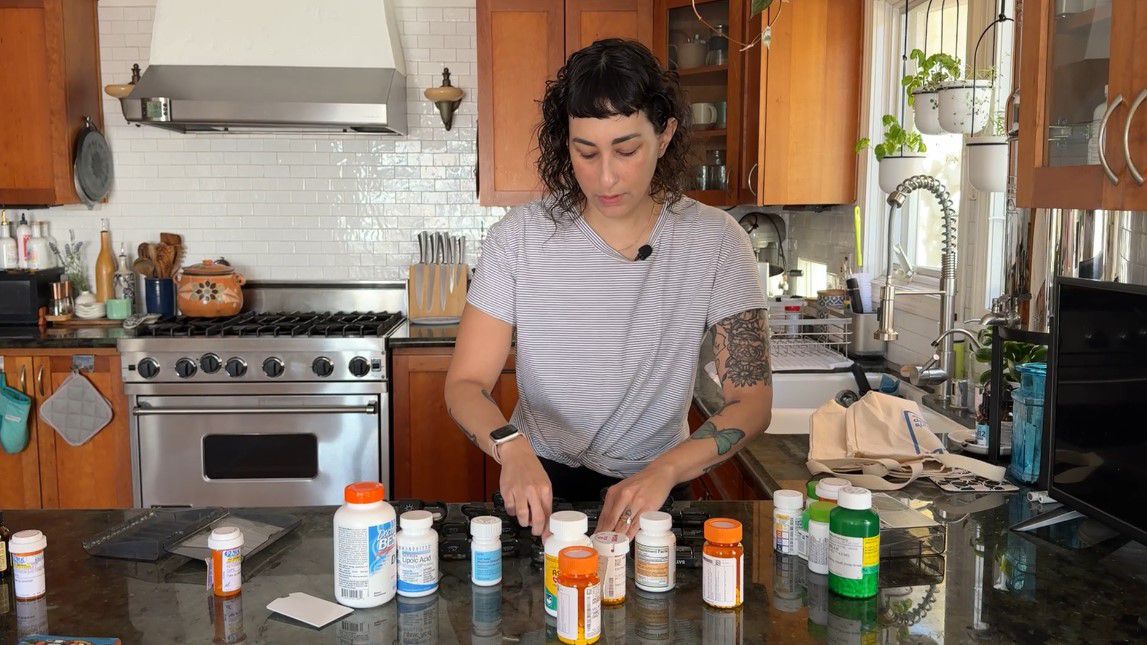SANTA ANA, Calif. (CNS) — Orange County officials Thursday announced they will shut down the county's mass COVID-19 vaccination sites in June due to a lack of demand for inoculations.
Instead, the county will focus more on mobile vaccination clinics to provide shots in areas where there is more resistance to getting the jab in the arm.
The Super Point-of-Dispensing, or POD, sites at the Anaheim Convention Center, OC Fair & Event Center, Soka University and Santa Ana College will shut down on June 6.
"It makes sense," Andrew Noymer, a UC Irvine professor of population health and disease prevention, told City News Service. "When we first started rolling out the vaccines, we really had to pull out all the stops and at this point, the best channels are where people would ordinarily go to get their flu shot. ... Closing down these mega sites is basically the most efficient use of resources at this point.
"We can argue whether it was ever an efficient use of resources. Certainly, the people who took a lot of credit for them were very fond of the idea at the time, but I don't want to relitigate that at this point. It's time to move on to other channels of distribution. But everyone should get vaccinated if they haven't already. People who waited till now should take advantage of that."
Noymer said it appears "the demand has lessened and that is somewhat worrisome, but keeping the mega PODs is not the solution to that problem."
The cause of vaccine reticence varies, but some are just concerned that they are new, Noymer said.
"I spoke to someone yesterday I was surprised to hear wasn't vaccinated yet and this person told me they were saying they were apprehensive because it was brand new technology and wanted to see more data," Noymer said. "It's a rational response. My personal take is I've seen the data and I got myself jabbed, but people have to have their own comfort level."
Vaccine-shaming won't help matters, Noymer said.
"I don't like this, `I'm a public health scientist and you need to do this,'" Noymer said. "It's talking down to people."
Orange County CEO Frank Kim told reporters on Thursday that the drop in demand has opened up an opportunity "to shift to a mobile platform and instead of just serving the under equity populations, we can do it for everybody in Orange County."
It gives the county a chance to have a presence in more places throughout the county, Kim said.
"We just think the time is right now to go more mobile and be more geographically diverse," Kim said.
The drop in demand "has been experienced across the county, not just the super PODs," said Dr. Regina Chinsio-Kwong, deputy county health officer.
"The county is not ending its vaccination efforts," Kim said. "We're just changing the format."
Kim said some mass vaccination sites have dropped to less than a thousand inoculations a day.
"It was different when we had very high volumes at Super PODs," Kim said. "It made sense to have them."
Dr. Margaret Bredehoft, the deputy agency director of the Orange County Health Care Agency, said the decline in demand cannot just be chalked up to hesitancy.
"It's not just hesitancy, but it's also convenience," Bredehoft said. "There's a convenience factor we also need to consider as well as timing. ... A lot of people are telling us they don't have the right time to get a vaccination."
Kim said it is difficult to get a handle on which locations to concentrate on because county officials are not receiving "granularity" on how many and where doses have been administered by private healthcare providers such as pharmacies.
"We are aware that pharmacies have seen the allocation of doses increase," Kim said.
Noymer anticipates another wave of infections in the fall or winter and the areas where vaccination has lagged will likely be harder hit by the coronavirus, Noymer said.
Orange County Thursday reported just 38 new COVID-19 cases and 13 additional fatalities, while hospitalization rates continue a downward trend.
According to numbers released Thursday, hospitalizations due to the coronavirus increased from 89 Wednesday to 91 Thursday, and the number of patients in intensive care decreased from 25 to 23.
"That's not a statistical fluke," Noymer said of the hospitalization rates. "It's real."
The county had 34% of its ICU beds and 76% of its ventilators available.
Thursday's figures brought the county's totals to 254,201cases and 4,992 fatalities since the pandemic began, according to the Orange County Health Care Agency.
Of the 13 fatalities logged on Thursday, seven occurred in April, raising the death toll for last month to 32. Four deaths occurred in March, raising that month's death toll to 184. February's death toll remained at 580.
The death toll for January, the deadliest month in the pandemic, increased by one to 1,532. December, the next deadliest, increased by one to 942.
There were more signs of a return to normalcy this week, with Knott's Berry Farm reopening for season-pass holders on Thursday. The Buena Park theme park will reopen for everyone on May 21, and on Wednesday, Knott's officials announced a reopening of its Soak City Waterpark on May 29, with passholders getting a preview on May 22-23.
Meanwhile, restaurateurs at the District at Tustin Legacy are up and running again, but are struggling to fill jobs amid much competition for staff members. The shopping center is hosting a job fair Thursday for its restaurant owners.
One of the county's most prominent hotels, the Hilton Anaheim, is set to reopen on May 20, officials said. Hotels in Anaheim are seeing ramped-up business since Disneyland's reopening last week.
The county meets two of the three categories for the least-restrictive yellow tier of the state's four-tier system for reopening the economy, but remained in the orange tier after the weekly rankings were released Tuesday.
Orange County's weekly average of daily new cases per 100,000 residents improved from 2.6 to 2.4. A graduation into the yellow tier requires that the case rate must get below 2 per 100,000 people. A county must maintain metrics for a tier for two weeks before graduating to a less restrictive level.
The overall test positivity rate improved from 1.4% to 1.3%. And the county's Health Equity Quartile rate, which measures positivity in hotspots in disadvantaged communities, declined from 1.9% to 1.4%.










